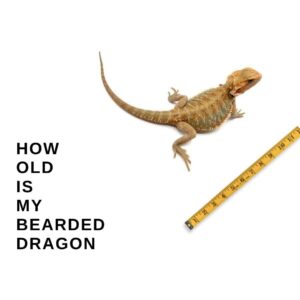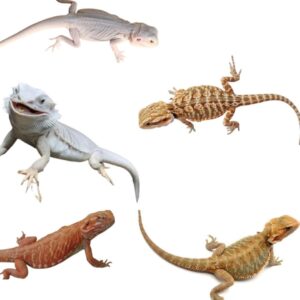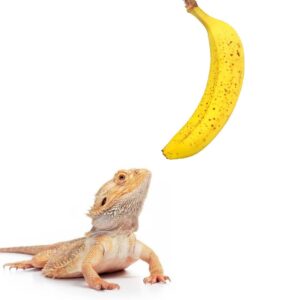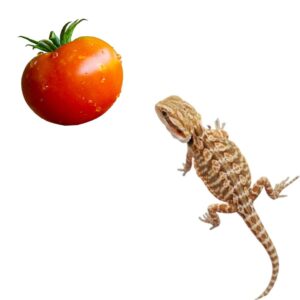The central bearded dragon, also known as Pogona vitticeps, is a popular reptile that hails from the arid regions of Australia.
These fascinating creatures have unique physical characteristics and display interesting behaviors and behaviors that make them captivating pets for reptile enthusiasts.
If you are considering getting a central bearded dragon as a pet, it is important to understand their origin, natural habitat, and other key aspects of their care.
Table of Contents
Origin and Natural Habitat
The central bearded dragon is native to central Australia’s arid and semi-arid regions. Their natural habitat consists of rocky areas, deserts, and open woodlands. These reptiles have adapted well to the harsh conditions of their environment, utilizing their unique heat-regulating abilities to survive.
In the wild, central bearded dragons can be found basking on rocks during the day to absorb warmth from the sun. They also can change their body color to regulate their temperature and blend in with their surroundings.
Physical Characteristics
They typically grow to an average length of 16 to 24 inches, with males slightly larger than females.
These reptiles have stout bodies, a triangular-shaped head, and a row of spiky scales along their throat, which resembles a beard.
Their body coloration varies but often includes shades of brown, tan, and yellow, with patterns and markings that help them camouflage in their natural habitat. Central bearded dragons also have a long tail that aids their balance and communication.
Lifespan and Growth
The central bearded dragon has a relatively long lifespan compared to other reptiles. A bearded dragon can live between 8 to 12 years with proper care.
The growth rate of bearded dragons is rapid during their first year, and they can reach their adult size within 12-18 months.
During this growth period, providing them with a balanced diet and adequate space to accommodate their increasing size is crucial. Understanding their nutritional requirements is a key aspect of ensuring their healthy growth.
Behavior and Temperament of Central Bearded Dragons
Central bearded dragons are known for their sociable nature. While they are primarily solitary creatures, they can be housed together if there is enough space to avoid territorial disputes. They may encounter each other occasionally in the wild but generally maintain their own territories.
In captivity, it is essential to monitor their interactions and provide separate enclosures if aggressive behavior or stress is observed. Providing enrichment activities and ensuring each dragon has its own designated area can help minimize potential conflicts.
Mating and Breeding Habits
Central bearded dragons reach sexual maturity around 1 to 2 years of age. During the breeding season, males display dominant behavior, including head bobbing and arm waving, to attract females. If a female is receptive, she may bob her head or display submissive behavior as part of the courtship ritual.
Once mating occurs, the female will lay a clutch of eggs in a carefully selected nesting site, typically ranging from 10 to 30. These eggs require specific incubation conditions to ensure successful hatching.
Defense Mechanisms
When it comes to defense, central bearded dragons have a few tricks up their sleeves. One of their primary defense mechanisms is their ability to puff up their body to appear larger and more threatening to predators.
They can also open their mouth wide and display their beard, which can change color dramatically. This intimidating display often deters potential threats, allowing them to escape dangerous situations. However, in captivity, they usually become quite docile and rarely resort to defensive behavior.
Diet and Nutrition
The central bearded dragon is an omnivorous reptile with specific dietary requirements. Their diet should consist of a variety of insects, such as crickets, roaches, and mealworms, as well as leafy greens and vegetables.
A balanced feeding schedule is essential to ensure their well-being. Juveniles require daily feeding, mostly insects, whereas adults can be fed every other day. Greens and vegetables should always be available for grazing.
Nutritional Requirements
It is crucial to provide the right balance of nutrients for a central bearded dragon’s diet. Insects should be gut-loaded or dusted with calcium and vitamin supplements to ensure adequate nutrition.
Leafy greens and vegetables provide essential vitamins and minerals. Calcium is especially important for proper bone development and must be provided in the correct ratio to phosphorus. Consult a veterinarian familiar with reptile nutrition to create a proper diet plan.
Common Dietary Issues
One common issue with bearded dragons is impaction, which occurs when they ingest substrate materials or too large insects. This can result in digestion issues or blockages in their intestinal tract. It is important to provide appropriate-sized food and avoid using loose substrate in their habitat.
Poor diet choices can also lead to nutritional deficiencies, metabolic bone disease, or other health problems. Always educate yourself about the proper diet and consult a reptile veterinarian if you have concerns about your bearded dragon’s nutrition.
Health and Wellness
Central bearded dragons are generally hardy reptiles when kept in optimal conditions. However, they can still experience certain health issues. Some common health problems encountered in bearded dragons include metabolic bone disease, respiratory infections, and parasites.
Regular veterinary check-ups and proper husbandry practices are crucial for maintaining a healthy bearded dragon.
Signs of a Healthy Bearded Dragon
Recognizing the signs of a healthy bearded dragon is essential for monitoring their well-being. A healthy bearded dragon should have clear, bright eyes, a responsive nature, and exhibit normal eating and drinking behavior.
They should also have a well-regulated body temperature and show no signs of abnormal skin shedding or discharge. Mental alertness and activity levels indicate a healthy central bearded dragon.
Veterinary Care for Bearded Dragons
Regular veterinary care is crucial for your bearded dragon’s overall health and wellness. A reptile veterinarian can provide routine check-ups, administer vaccinations if necessary, and offer guidance on proper nutrition and habitat conditions.
It is essential to find a veterinarian experienced in reptiles to ensure that your bearded dragon receives the highest quality medical care.
In conclusion, the central bearded dragon is a fascinating reptile with unique characteristics and behaviors. Understanding their origin, natural habitat, diet, and health requirements is crucial for providing optimal care. With proper education and commitment to their well-being, these captivating creatures can make wonderful pets for reptile enthusiasts.
Conservation Status
Central Bearded Dragons are currently listed as Least Concern by the IUCN Red List. However, habitat loss and fragmentation due to human activities pose potential threats to their long-term survival.
To learn more about these captivating creatures, visit a local reptile rescue or breeder to observe them firsthand. With their remarkable adaptability, vibrant colors, and engaging personalities, Central Bearded Dragons will captivate your heart!
My Senior Paws is a participant in the Amazon Services LLC Associates Program, an affiliate advertising program designed to provide a means for sites to earn advertising fees by advertising and linking to Amazon.com. We also participate in other affiliate programs which compensate us for referring traffic.




